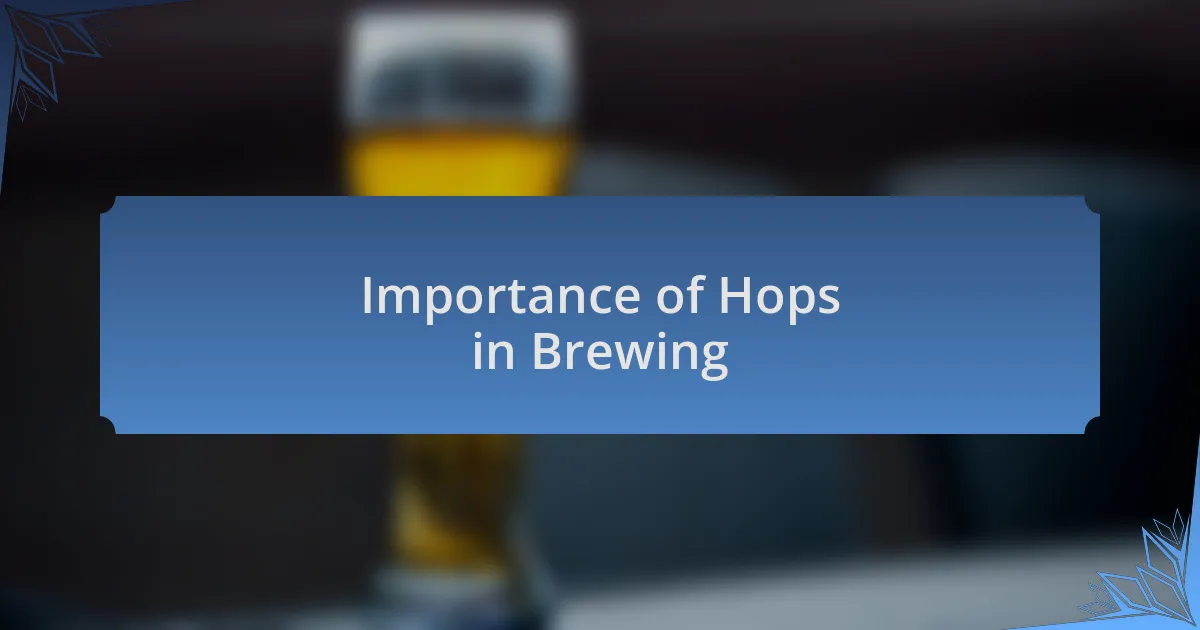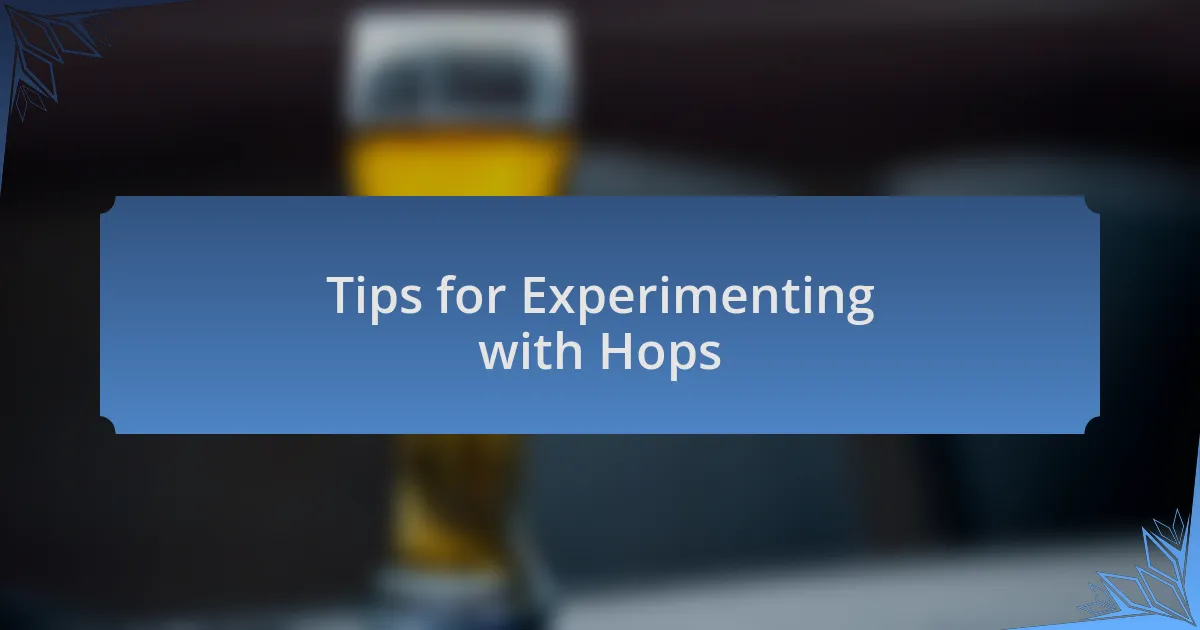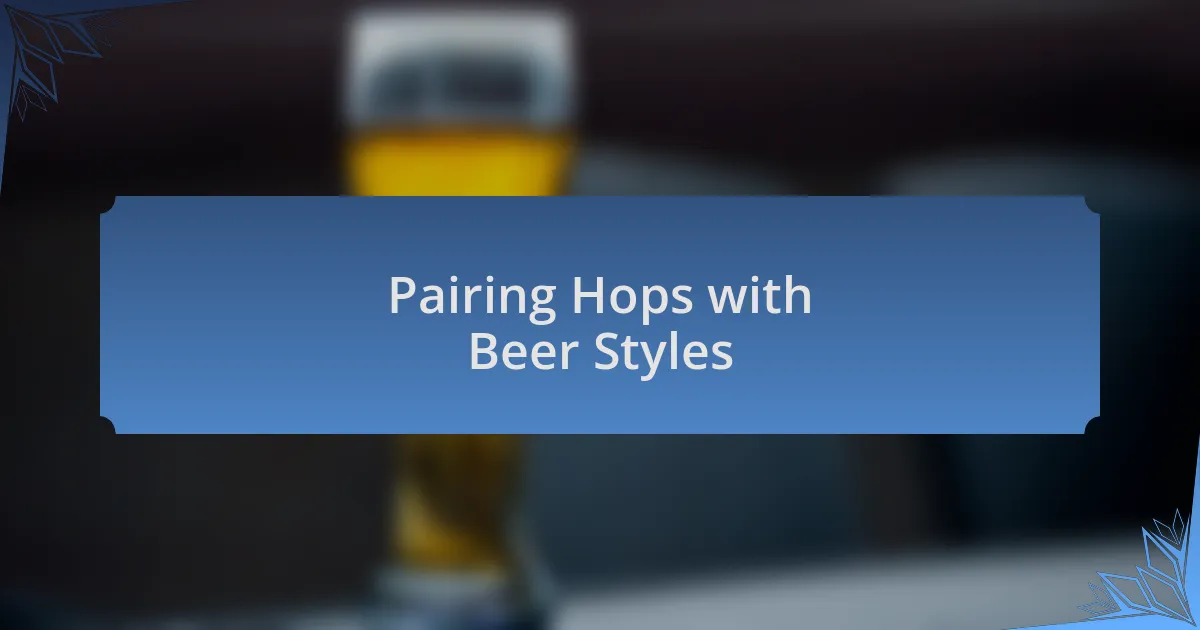Key takeaways:
- Craft beer festivals foster community and showcase local brews, highlighting the artistry and cultural significance behind each beer.
- Hops play a critical role in defining beer’s flavor, aroma, and preservation, with techniques like dry hopping enhancing the overall drinking experience.
- Experimenting with different hop varieties can lead to unique flavor profiles and exciting new brews, encouraging creativity in brewing.
- Understanding the characteristics of hops is essential for pairing them effectively with different beer styles, resulting in balanced and innovative flavors.

Understanding Craft Beer Festivals
Craft beer festivals are a celebration of creativity and community, drawing passionate brewers and enthusiastic beer lovers together. I remember attending my first festival, where the lively atmosphere buzzed with laughter and the clinking of glasses, creating an unforgettable sense of camaraderie. Have you ever felt that electric energy when you sample a unique brew, discovering flavors you never knew existed?
These festivals not only showcase a wide variety of craft beers, but they also offer insights into the brewing process itself. During a chat with a local brewer, I learned about the meticulous care involved in selecting hops, which made me appreciate every sip even more. Isn’t it amazing how each choice, from the malt to the hops, can influence the final taste of the beer?
Attending a craft beer festival also means diving into local culture. Each brewer tells a story through their craft, reflecting the ingredients and traditions of their region. I often find myself captivated by these narratives, feeling a deep connection to the place and community behind each brew. How does tasting a local beer feel like catching a glimpse into the heart of a culture? It’s a journey, and each pint holds a piece of that vibrant story.

Importance of Hops in Brewing
Hops are often referred to as the heart and soul of beer, playing a crucial role in defining its flavor and aroma. I remember sipping a perfectly balanced IPA and being enveloped by a whirlwind of citrus and pine notes—those came directly from the hops. Can you imagine a world where those zesty aromas were absent? It’s remarkable how hops can add such depth and character to every brew.
Beyond flavor, hops also serve a vital function in brewing by acting as a natural preservative. During a conversation with a brewer, I was fascinated to learn that the bitterness from hops not only balances the sweetness of the malt but also contributes to a beer’s shelf life. Isn’t it incredible how such a tiny flower can impact a brew’s longevity and freshness?
Moreover, hops can influence the beer’s mouthfeel and overall drinking experience. I once tried a small batch pale ale that had an unusually smooth finish, and I learned later that it was achieved through a unique hopping technique called dry hopping. Have you had a beer that surprised you with its texture? Understanding how hops contribute to these elements truly enhances the appreciation of craft beer and its diversity.

My Personal Favorite Hops
When it comes to my favorite hops, Citra is at the top of the list. I vividly remember the first time I tried a beer brewed with Citra hops; the wave of tropical fruit flavors just struck me. It was almost like biting into a ripe mango, and I immediately understood why so many brewers adore this hop for its bold citrusy profile. Can hops really take you on a flavor journey? They absolutely can.
Another great contender for my hop preference is Simcoe. The complexity of its aroma is mesmerizing—earthy, piney, and slightly floral. I once had a double IPA that showcased Simcoe beautifully, and I found myself savoring each sip, trying to identify all its subtle nuances. Isn’t it fascinating that hops can evoke such a range of sensations?
Lastly, I can’t overlook the charm of Mosaic hops. They’ve brought a delightful array of flavors to many beers I’ve enjoyed, from berry-like notes to earthy undertones. There was one evening spent at a local brewery where I tasted a pale ale that made me speechless; the Mosaic hops created a harmony unlike anything I had ever encountered before. How can a single hop achieve such a wide spectrum of flavors? It’s a testament to the artistry of brewing and the magic of hops.

Tips for Experimenting with Hops
Experimenting with hops can be a thrilling adventure for any brewer. I recall my first attempt at using a lesser-known hop variety called Ella. The uniqueness of its spicy characteristics surprised me, and I couldn’t help but wonder how such a distinct profile would blend into a recipe. Do you remember the excitement of trying something completely new? That’s exactly what experimenting with hops feels like—an open door to discovery.
When trying different hops, I recommend starting with small batches. A few months back, I decided to brew a session IPA with a mix of Cascade and Galaxy hops. The result was a refreshing citrus-forward beer that tuned my taste buds to a new frequency. It made me think: why not combine hops that typically don’t go together? This method not only preserves the integrity of each hop’s flavor but allows you to zero in on what works for your palate.
Don’t shy away from dry hopping to enhance the aroma profile! My last brew utilized dry hopping with a bold blend of Azacca and New Zealand hops. The aroma it released was simply intoxicating, as if I had just walked through a citrus orchard. This technique brought life to the beer, forcing me to ask: how can a simple process elevate a brew so dramatically? I believe the answer lies in the quality of the hops and your willingness to explore new possibilities.

Pairing Hops with Beer Styles
When it comes to pairing hops with specific beer styles, I find that understanding each hop’s characteristics is crucial. For instance, when I brewed a classic American Pale Ale, I chose Citra hops for their zesty grapefruit notes, perfectly complementing the beer’s malt backbone. Have you ever noticed how a single hop can elevate the entire flavor profile with just the right balance?
For darker styles, like porters or stouts, I’ve experimented with earthy hops like Fuggles. This combination often yields a brew rich in chocolate and coffee notes, providing a unique depth. It’s fascinating to see how these seemingly contrasting flavors can harmonize. I often ponder—what happens when I blend a surprising hop, like Mosaic, into a traditional brown ale? The delightful complexity it adds often leaves me wanting more.
One of my favorite experiments was pairing Sorachi Ace with a hefeweizen. I watched in amazement as the lemony, dill-like notes lifted the classic wheat beer, creating a refreshing take on a familiar style. It prompted me to ask myself: what if we turned conventions on their head? This adventure of pairing hops truly allows for limitless creativity and joyous surprises.